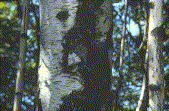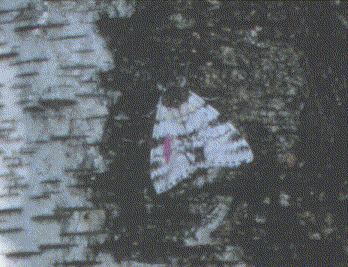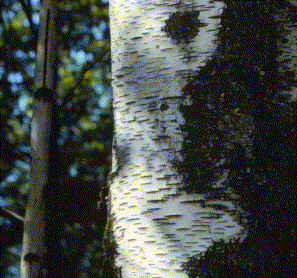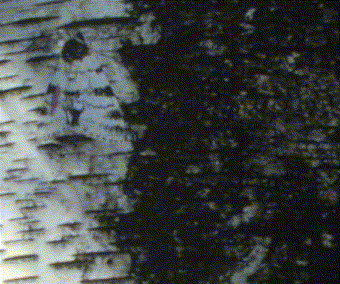Catocala relicta
behavior correlates with its cryptic coloration
The Underwing Moths (Noctuidae, genus Catocala
provide some of
the best examples of cryptic coloration. These large and beautiful moths
are named for their spectacular hindwings, which presumably serve as startle
devices. But it is the forewings that provide their initial line of defense,
enabling the moths to become nearly invisible on the backgrounds (tree trunks)
upon which they rest.
In one study with these moths, I captured specimens at bate (sugary
solution applied to trees) during the night, and then held them overnight in a
refrigerator. The next morning the moths were color-marked with a paint
daub on one forewing (in order that they might be more easily found later),
and then released into a local woodlot.
One of these moths is the one you see here - a White Underwing (Catocala
relicta.
When this moth was released, it flew about rather eratically at first, and
then its behavior suddenly changed. Now it seemed to be goal directed,
as it flew in a straight line to the resting site you see here:
Can you see the moth at this distance?

Now it is clear...

... and now very clear. Here you can easily see the lavender marking
that was painted onto the moth earlier this morning.

Study Question: Why is the moth so visible?
It seemed to select an appropriate tree, a paper birch
(Betula papyrifera) which its forewings would normally match.
But it landed on a large black patch! It seemed to recognize the tree
from a distance (remember the directed flight), but what happened as it landed?
Perhaps we should wait a few minutes and see if the moth moves?
Now, let's see, is the moth still there? No? Where has it gone?

Oh, yes, now at this closer distance it is obvious!

original slides © 1995, T. D. Sargent
What does all of this suggest about the visual abilities of this
moth? How does it finally end up in an appropriate site? Do you
think that the moth has two different background recognition systems -
one that operates from a distance, and one that operates after it comes to
rest? How would you test those ideas?
Why does this moth always rest "head-up" on birch trees? Does this
suggest some coevolution of morphology and behavior? What additional
predictions might you make regarding the behavior of this White
Underwing moth, or the behavior of its predators? Again, how would you test
those predictions?
Back to: |
Kunkel Home Page|
Biology Dept.|
UMass Home Page|





